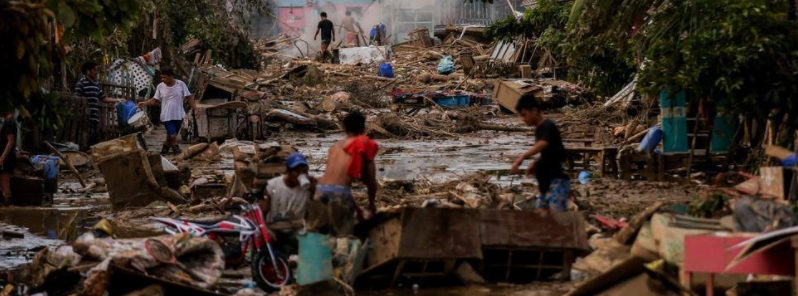Entire Luzon under state of calamity after devastation caused by typhoons Goni and Vamco, Philippines

The entire island of Luzon, Philippines, has been placed under a state of calamity as of November 18, 2020, following the devastation of successive typhoons Goni (locally named Rolly)– the world's most powerful storm of the year and the country's strongest landfalling tropical cyclone– and Vamco (locally known as Ulysses), which triggered the Cagayan Valley's worst flooding in history. Both storms left massive damage, hundreds of thousands of houses and buildings submerged, and at least 98 people dead, according to the situational report of the National Disaster Risk Reduction and Management Council (NDRRMC).
During a meeting with cabinet members, President Rodrigo Duterte confirmed that he has signed the proclamation of a state of calamity, which will remain in effect until he decides to lift it.
The declaration would make it easier for local government units to access fast response and calamity funds, which have been depleted for many localities due to the COVID-19 pandemic. It also triggered an automatic price freeze on essential items.
Super Typhoon "Goni" caused widespread destruction, especially in the Bicol region. A total of 139 122 families or 504 807 persons were pre-emptively evacuated.
According to the NDRRMC, the storm left at least 25 people dead, 399 injured, 6 missing persons, and a total of 170 773 houses affected. The damage to infrastructure amounted to 12.8 billion pesos or 265 million dollars, while the damage to agriculture is approximately 5 billion pesos or 103 million dollars.
Goni made landfall on October 31 with maximum sustained winds of 225 km/h (140 mph) and gusts to 280 km/h (174 mph), making it the world's most powerful storm of the year and the country's strongest landfalling tropical cyclone on record.



Typhoon "Vamco" made landfall on November 11 with maximum sustained winds of 155 km/h (96 mph) and gusts to 205 km/h (127 mph). It triggered catastrophic flooding in various parts of Luzon, including Isabela, Rizal, Marikina, and Cagayan, which locals described as worse than the 2009 Typhoon "Ketsana" (Ondoy)– the second most devastating tropical cyclone that year.
"We haven’t experienced this kind of flooding for so many months or years. That's why everyone was surprised," said Marikina mayor Marcelino Teodoro.
Cagayan Valley bore the brunt of the floods as the province was submerged in its worst inundation in history, leaving more than 1.7 million people affected. This prompted governor Manual Mamba to declare a state of calamity for the province on November 14.




Defense Secretary Delfin Lorenzana said military personnel deployed in Cagayan and Bicol were assisting affected residents, adding that two Navy ships and aircraft had joined the relief operations. Troops were also helping with clearing operations in Marikina.
In an update by the NDRRMC on November 19, at least 73 fatalities have been confirmed, 24 others injured, and 19 persons were missing. The storm has left more than 3.5 million affected in Regions I, II, III, V, CALABARZON, MIMAROPA, NCR, and CAR.
An estimated 4 billion pesos or 82 million dollars' worth of damage to agriculture was incurred, while the damage to infrastructure was estimated at 6 billion pesos or 124 million dollars.
Featured image credit: Basilio Sepe/Greenpeace

Commenting rules and guidelines
We value the thoughts and opinions of our readers and welcome healthy discussions on our website. In order to maintain a respectful and positive community, we ask that all commenters follow these rules.